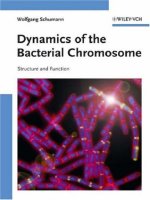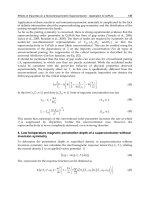Membrane Structure and Function - Chapter 7 docx
Bạn đang xem bản rút gọn của tài liệu. Xem và tải ngay bản đầy đủ của tài liệu tại đây (4.6 MB, 83 trang )
Copyright © 2008 Pearson Education, Inc., publishing as Pearson Benjamin Cummings
PowerPoint
®
Lecture Presentations for
Biology
Eighth Edition
Neil Campbell and Jane Reece
Lectures by Chris Romero, updated by Erin Barley with contributions from Joan Sharp
Chapter 7
Membrane Structure and
Function
Overview: Life at the Edge
•
The plasma membrane is the boundary that
separates the living cell from its surroundings
•
The plasma membrane exhibits selective
permeability, allowing some substances to cross
it more easily than others
Copyright © 2008 Pearson Education, Inc., publishing as Pearson Benjamin Cummings
Fig. 7-1
Concept 7.1: Cellular membranes are fluid mosaics
of lipids and proteins
•
Phospholipids are the most abundant lipid in the
plasma membrane
•
Phospholipids are amphipathic molecules,
containing hydrophobic and hydrophilic regions
•
The fluid mosaic model states that a membrane
is a fluid structure with a “mosaic” of various
proteins embedded in it
Copyright © 2008 Pearson Education, Inc., publishing as Pearson Benjamin Cummings
Membrane Models: Scientific Inquiry
•
Membranes have been chemically analyzed and
found to be made of proteins and lipids
•
Scientists studying the plasma membrane reasoned
that it must be a phospholipid bilayer
Copyright © 2008 Pearson Education, Inc., publishing as Pearson Benjamin Cummings
Fig. 7-2
Hydrophilic
head
WATER
Hydrophobic
tail
WATER
•
In 1935, Hugh Davson and James Danielli proposed a
sandwich model in which the phospholipid bilayer lies
between two layers of globular proteins
•
Later studies found problems with this model,
particularly the placement of membrane proteins, which
have hydrophilic and hydrophobic regions
•
In 1972, J. Singer and G. Nicolson proposed that the
membrane is a mosaic of proteins dispersed within the
bilayer, with only the hydrophilic regions exposed to
water
Copyright © 2008 Pearson Education, Inc., publishing as Pearson Benjamin Cummings
Fig. 7-3
Phospholipid
bilayer
Hydrophobic regions
of protein
Hydrophilic
regions of protein
•
Freeze-fracture studies of the plasma membrane
supported the fluid mosaic model
•
Freeze-fracture is a specialized preparation
technique that splits a membrane along the middle
of the phospholipid bilayer
Copyright © 2008 Pearson Education, Inc., publishing as Pearson Benjamin Cummings
Fig. 7-4
TECHNIQUE
Extracellular
layer
Knife
Proteins
Inside of extracellular layer
RESULTS
Inside of cytoplasmic layer
Cytoplasmic layer
Plasma membrane
The Fluidity of Membranes
•
Phospholipids in the plasma membrane can move
within the bilayer
•
Most of the lipids, and some proteins, drift laterally
•
Rarely does a molecule flip-flop transversely across
the membrane
Copyright © 2008 Pearson Education, Inc., publishing as Pearson Benjamin Cummings
Fig. 7-5
Lateral movement
(~10
7
times per second)
Flip-flop
(~ once per month)
(a) Movement of phospholipids
(b) Membrane fluidity
Fluid
Viscous
Unsaturated hydrocarbon
tails with kinks
Saturated hydro-
carbon tails
(c) Cholesterol within the animal cell membrane
Cholesterol
Fig. 7-5a
(a) Movement of phospholipids
Lateral movement
(∼10
7
times per second)
Flip-flop
(∼ once per month)
Fig. 7-6
RESULTS
Membrane proteins
Mouse cell
Human cell
Hybrid cell
Mixed proteins
after 1 hour
•
As temperatures cool, membranes switch from a
fluid state to a solid state
•
The temperature at which a membrane solidifies
depends on the types of lipids
•
Membranes rich in unsaturated fatty acids are more
fluid that those rich in saturated fatty acids
•
Membranes must be fluid to work properly; they are
usually about as fluid as salad oil
Copyright © 2008 Pearson Education, Inc., publishing as Pearson Benjamin Cummings
Fig. 7-5b
(b) Membrane fluidity
Fluid
Unsaturated hydrocarbon
tails with kinks
Viscous
Saturated hydro-
carbon tails
•
The steroid cholesterol has different effects on
membrane fluidity at different temperatures
•
At warm temperatures (such as 37°C), cholesterol
restrains movement of phospholipids
•
At cool temperatures, it maintains fluidity by
preventing tight packing
Copyright © 2008 Pearson Education, Inc., publishing as Pearson Benjamin Cummings
Fig. 7-5c
Cholesterol
(c) Cholesterol within the animal cell membrane
Membrane Proteins and Their Functions
•
A membrane is a collage of different proteins
embedded in the fluid matrix of the lipid bilayer
•
Proteins determine most of the membrane’s specific
functions
Copyright © 2008 Pearson Education, Inc., publishing as Pearson Benjamin Cummings
Fig. 7-7
Fibers of
extracellular
matrix (ECM)
Glyco-
protein
Microfilaments
of cytoskeleton
Cholestero
l
Periphera
l
proteins
Integral
protein
CYTOPLASMIC SIDE
OF MEMBRANE
Glycolipid
EXTRACELLULAR
SIDE OF
MEMBRANE
Carbohydrate
•
Peripheral proteins are bound to the surface of
the membrane
•
Integral proteins penetrate the hydrophobic core
•
Integral proteins that span the membrane are called
transmembrane proteins
•
The hydrophobic regions of an integral protein
consist of one or more stretches of nonpolar amino
acids, often coiled into alpha helices
Copyright © 2008 Pearson Education, Inc., publishing as Pearson Benjamin Cummings
Fig. 7-8
N-terminus
C-terminus
α
Helix
CYTOPLASMIC
SIDE
EXTRACELLULAR
SIDE
•
Six major functions of membrane proteins:
–
Transport
–
Enzymatic activity
–
Signal transduction
–
Cell-cell recognition
–
Intercellular joining
–
Attachment to the cytoskeleton and
extracellular matrix (ECM)
Copyright © 2008 Pearson Education, Inc., publishing as Pearson Benjamin Cummings
Fig. 7-9
(a) Transport
ATP
(b) Enzymatic activity
Enzymes
(c) Signal transduction
Signal transduction
Signaling molecule
Receptor
(d) Cell-cell recognition
Glyco-
protein
(e) Intercellular joining
(f) Attachment to
the cytoskeleton
and extracellular
matrix (ECM)
Fig. 7-9ac
(a) Transport
(b) Enzymatic activity
(c) Signal transduction
ATP
Enzymes
Signal transduction
Signaling molecule
Receptor









